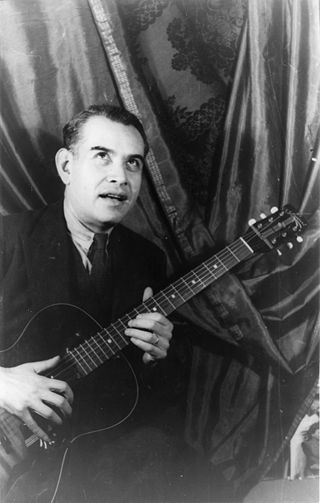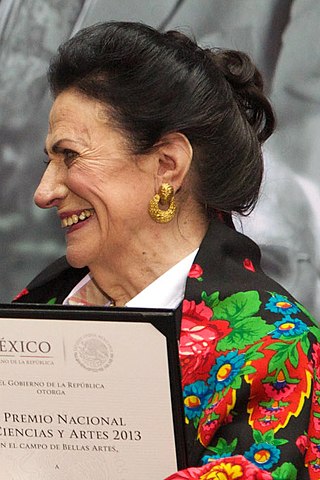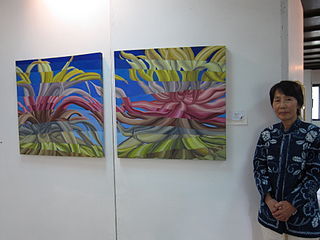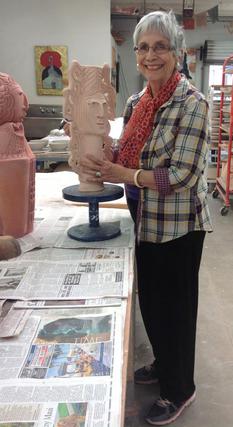
Rufino del Carmen Arellanes Tamayo was a Mexican painter of Zapotec heritage, born in Oaxaca de Juárez, Mexico. Tamayo was active in the mid-20th century in Mexico and New York, painting figurative abstraction with surrealist influences.

Francisco Benjamín López Toledo was a Mexican Zapotec painter, sculptor, and graphic artist. In a career that spanned seven decades, Toledo produced thousands of works of art and became widely regarded as one of Mexico's most important contemporary artists. An activist as well as an artist, he promoted the artistic culture and heritage of Oaxaca state. Toledo was considered part of the Breakaway Generation of Mexican art.
Elyse Pignolet is a visual artist living and working in Los Angeles, California.

Talavera pottery is a Mexican and Spanish pottery tradition from Talavera de la Reina, in Spain. In 2019, it was included in UNESCO's Representative List of the Intangible Cultural Heritage of Humanity.

Kenneth Price was an American artist who predominantly created ceramic sculpture. He studied at the Chouinard Art Institute and Otis Art Institute in Los Angeles, before receiving his BFA degree from the University of Southern California in 1956. He continued his studies at Chouinard Art Institute in 1957 and received an MFA degree from New York State College of Ceramics at Alfred University in 1959. Kenneth Price studied ceramics with Peter Voulkos at Otis and was awarded a Tamarind Fellowship.

Linda Vallejo is an American artist known for painting, sculpture and ceramics. Her work often addresses her Mexican-American ethnic identity within the context of American art and popular culture. The founder of the commercial art gallery Galería Las Américas, she is also an arts educator and has been involved intraditional Native American and Mexican rituals and ceremonies for many years.

Ángela Gurría Davó was a Mexican sculptor. In 1974, she became the first female member of the Academia de Artes. She is best known for her monumental sculptures such as Señal, an eighteen-meter tall work created for the 1968 Summer Olympics. She lived and worked in Mexico City.

Jorge Wilmot was one of the most distinguished artisans of Mexico, and has been credited with the introduction of stoneware and other high fire techniques to the country. His work is also known for its more austere, Oriental-inspired designs blended with Mexican motifs. His work has been widely sold and exhibited both in Mexico and abroad and he has trained and influenced generations of ceramicists at the school he established in Tonalá, Jalisco.

Midori Suzuki is a Japanese artist who has developed her career mostly in Mexico, both as an individual artist and as a member of the Japanese-Mexican artist collective Flor de Maguey. She was trained as an artist in Japan and Spain. In the latter country, she saw a sarape for the first time and became interested in Latin America, going to Mexico for the first time in the early 1980s. She met her husband while in the country and although they first lived in Japan, they then decided to live permanently in Mexico. Suzuki has had numerous exhibitions in Japan, Spain and Mexico, both individually and in group showings. Her work has also been featured in books and magazines.
Lucinda Urrusti was a Spanish-born Mexican artist, whose work has gained fame not only from the writing of art critics, but also by poets and writers from other fields, such as Carlos Fuentes. She was born in Melilla to a Spanish family which came to Mexico in 1939 to escape the Spanish Civil War and remained in Mexico since. Urrustia was a part of Mexico’s Generación de la Ruptura, a group of artists that broke with the dominant Mexican muralism of the first half of the 20th century with most of her work classed as Impressionism and/or abstract. However, she was also a noted portrait artist, having depicted a number of Mexico’s elite in the arts and sciences.

Gertrud Amon Natzler was an Austrian-American ceramicist, who together with her husband Otto Natzler created some of the most praised ceramics art of the 20th century, helping to elevate ceramics to the status of a fine art.

Dora De Larios was an American ceramist and sculptor working in Los Angeles. She was known for her work's clean lines and distinctive glazes, as well as for her line of tableware created under her family-run company Irving Place Studio. Also a muralist working with tile, De Larios was noted for her style, which reflects mythological and pan-cultural themes.
Shizu Saldamando, is an American visual artist. Her work merges painting and collage in portraits that often deal with social constructs of identity and subcultures. Saldamando also works in video, installation and performance art. She has been featured in numerous exhibitions, has attained accolades like that of Wanlass Artist in Residence, and is a successful writer, tattoo artist, and social activist.
Rafael Esparza is an American performance artist who lives and works in Los Angeles. His work includes performances affecting his physical well-being and installations constructed from adobe bricks. Esparza often works with collaborators, including members of his family.

Harrison Edward McIntosh was an American ceramic artist. He was an exponent of the Mid-century Modern style of ceramics, featuring simple symmetrical forms. His work has been exhibited in venues in the United States including the Smithsonian and internationally including at the Louvre in France.
Polia Pillin, née Sukonic or Sunockin, was a Polish-American ceramist during the 20th century. Born in Częstochowa, Poland, in 1909, she immigrated to the United States in 1924 and settled in Chicago, Illinois. In 1927, she met and married Ukrainian immigrant William Pillin. They lived near Albuquerque, New Mexico, from 1936-1940; Chicago from 1940-1948; and finally Los Angeles, California, from 1946 until their deaths.

Chicana art emerged as part of the Chicano Movement in the 1960s. It used art to express political and social resistance through different art mediums. Chicana artists explore and interrogate traditional Mexican-American values and embody feminist themes through different mediums such as murals, painting, and photography. The momentum created from the Chicano Movement spurred a Chicano Renaissance among Chicanas and Chicanos. Artists voiced their concerns about opression and empowerment in all areas of race, gender, class, and sexuality. Chicana feminist artists and Anglo-feminist took a different approach in the way they collaborated and made their work during the 1970's. Chicana feminist artists utilized artistic collaborations and collectives that included men, while Anglo-feminist artists generally utilized women-only participants.Art has been used as a cultural reclamation process for Chicana and Chicano artists allowing them to be proud of their roots by combining art styles to illustrate their multi-cultured lives.
Sandy Rodriguez was born in 1975 in National City, California. She is a Los Angeles based artist who grew up on the US-Mexico border, in Tijuana, San Diego, and Los Angeles. She has exhibited her works with numerous museums and galleries, including the Denver Art Museum, The Huntington Library, Art Museum and Botanical Garden, the Amon Carter Museum of American Art, Los Angeles County Museum of Art, Museum of Contemporary Art San Diego, MOCA Busan Busan Bienniale, Crystal Bridges Museum of American Art, The Cheech Marin Center for Chicano Art, Art+Practice, and Self Help Graphics. Her work focuses on the ongoing cycles of violence on communities of color by blending historical and recent events in the Los Angeles area and along south-west US-Mexico border. A transitional moment for Rodriguez happened in 2014 on a visit to Oaxaca, a southern Mexican Region, where she first procured a red pigment called cochineal, coming from the pre-Columbian era. Prior to this, Rodriguez had painted exclusively in modern paint. The encounter with cochineal happened at the same time she was painting fire paintings and the protests began in Ayotzinapa Mexico in response to forty-three missing college students, which included setting fire to palacio nacional and an Enrique Peña Nieto effigy pinata. The alignment of content, form, and the materials magnified how material can signal cultural identity, history, and politics. A goal of her work is to disrupt dominant narratives and interrogate systems that are ongoing expressions of colonial violence witnessed regularly, including Customs Border Enforcement, Police, and Climate Change.
Yolanda González is a Chicana multimedia artist based in Los Angeles. She primarily works in ceramics, drawing, painting, and printmaking.











